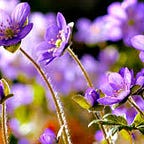Ravishing Ragas: an Overview
Unveiling the beauty and intricacies of Ragas in Carnatic Music with the advent of the Margazhi Music Festival
The Tamil month of Margazhi, brings with it an aura of rich musical elegance. This month is dedicated to the celebration of Classical Music and Bhakti (devotion). With enthusiasts thronging the sabhas to watch their favourite artists perform at Music Festivals, the Margazhi Music Season never fails to captivate music-lovers.
So this Margazhi, let’s sneak a peek into the vast world of Carnatic Music, by exploring Ragas. A Raga is a tune that is built upon a specific ascending and descending scale of swara-sthanas (or musical notes). Indian Classical Music originated from the Vedas, the ancient collection of religious hymns that existed long before human civilizations came into existence. In Carnatic Music, there are 72 Fundamental Ragas called Melakarta ragas. Their scales consist of all the Seven swaras in order. The variation in the type of the note used determines the rasa (or the emotion) that the raga evokes when sung as a tune. These 72 ragas form the basis for Janya Ragas (or daughter ragas).
The beauty of a raga evolves as a combination of various factors. One of them is the constituent swaras of the raga that define it. Further, the aesthetically appealing combination of these notes to form patterns of the raga reveal its numerous shades, so as to paint its entire picture.
Ragas are classified in various ways. Perhaps the simplest understanding that a layman can relate to is whether it is a ‘happy’ or a ‘serious’ raga. The raga Mohanam, for instance, may fall into the first category. Mohanam is a Janya raga, derived from the 29th Melakarta raga called Sankarabharanam. Known as one of the most enchanting and melodious ragas, it consists of 5 swaras in its scale.
Here is a beautiful rendition of Mohanam raga by the Violin Maestro MS Gopalakrishnan:
On the other hand, the raga Thodi, the 8th Melakarta raga, can be thought of as a ‘serious’ raga. It is considered to be very challenging to perform, but at the same provides magnanimous scope for creativity.
Here is a rendition of the Raga Thodi by the Violin Maestro Lalgudi Jayaraman:
Having gotten a feel of how the musical notes or constituent swaras alter the emotion that a raga creates, let’s have a look at what these swaras exactly are. The basic swaras, 12 in number, are called Dwadasha swaras (Dwadasha-Twelve in Sanskrit). They are as follows:
Though these are plain musical notes, each swara can take different forms in different ragas, i.e., the fundamental frequency of the note remains unchanged, but the note, for instance, may be used with a slight oscillation, or in a passive manner. Each raga has some rules for the prayoga (correct use) of the swaras. That’s what makes each raga unique.
To add on, ragas derived from a Melakarta raga possess the same (but not all) swaras, but vary in terms of their use and the scale itself. Interestingly, there are a few exceptions where the raga contains a swara that the parent raga doesn’t possess. An example would be Hamirkalyani, a Janya of the 65th Melakarta raga Kalyani. Its scale is as follows:
Arohanam: S P M2 P D2 N3 S
Avarohanam: S N3 D2 P M2 M1 G3 P M1 R2 S
Note the appearance of M1 and M2 in the scales. Whereas the raga Kalyani contains only Prati Madhyama (M2).
Usually, ragas have characteristic phrases of their own, which makes it easier to identify them without analyzing the constituent swaras. Identifying the raga is certainly the most interesting exercise that the audience of a concert indulges in!
This quick overview intended to instill a sense of perception towards this age-old form of art. Here’s wishing everyone a marvelous musical journey this Margazhi!
